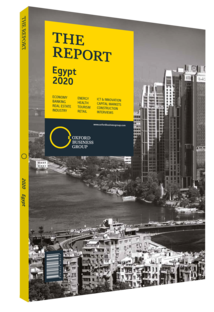How will investment in textiles increase Egypt's exports?
In comparison to many other industrial subsectors in Egypt that rely heavily on imported inputs, which grew more costly following the 2016 currency devaluation, the garment segment is able to use locally sourced materials. Foreign investors are attracted to the production base’s relatively affordable labour, lower electricity and water costs, and attractive location with proximity to key markets in Europe, Africa and Asia. Textiles are also central to the government’s efforts to increase the volume of value-added exports.
Textiles’ annual export value is estimated to be around $2.6bn, or 15% of non-oil exports. According to the Textile Export Council – a public-private partnership organisation under the umbrella of the Ministry of Trade and Industry – the garment sector’s exports increased by 6% between January and July 2019, reaching $976m – an increase from $915min the same period of the previous year. The main purchasers of Egyptian textiles over this period were the US, Spain, Germany and the UK. With Chinese manufacturing costs increasing and the Covid-19 pandemic disrupting the supply chain, Egypt is becoming a more attractive option for foreign firms looking to an alternative closer to home.
Modernisation
Part of boosting value-added products’ contribution to exports is improving efficiency, with the government aiming to modernise the sector by merging existing plants and replacing out-of-date machinery. In April 2019 Hisham Tawfik, the minister of public enterprise sector, announced that the government would invest LE10bn ($616.3m) in new machinery for state-owned spinning and weaving factories.
In September 2019 the Ministry of the Public Enterprise Sector announced a strategy to restructure the textile companies that operate under the state-run Cotton & Textile Industries Holding Company. Under the plan, the company will merge its 22 subsidiaries into nine textile companies, as well as reduce the number of facilities for cotton ginning and trade from nine to one. The strategy is set to have a wider impact on the sector, with state-run companies comprising 65% of total manufacturing. The LE20bn ($1.2bn) strategy aims to reduce losses and increase profits while building four factories, upgrading machinery and providing training for workers. The government hopes the changes will quadruple textile and garment exports by 2025.
Reforms and modernisation will do much to position Egypt’s textile and garment industry for future growth. These efforts will also help the segment contribute more to value-added exports, while providing employment opportunities for a rapidly growing population.
Foreign Investment
In early 2018 the government announced plans to construct the country’s largest textile and garment city in the country in Monufiya. Once complete, the 3.1m sq metre city will include 592 factories with technologically advanced spinning and weaving equipment. The project will be funded with paid-up capital of $2bn, 87% of which will come from foreign investors. Egyptian officials estimate that the garment city will create 160,000 jobs once operating at full capacity. Chinese firm Ningxia Mankai Investment Company was chosen for the project, with the first phase of the China-Egypt Mankai Textile Park in Sadat City commencing in May 2018. Furthermore, in July 2019 the government announced that Ajlan & Bros, a Saudi menswear manufacturer, had plans to establish a textile and garment production plant in Qena. The completed facility is expected to create 12,000 jobs.
Technology
The private sector is also getting involved in the modernisation of the sector. Cairo-based start-up Garment IO was launched in 2017 to help factories gather production information in real time, including order tracking and quality management, using the internet of things. In February 2020 it secured $450,000 in seed funding from investment firm Egypt Ventures and venture fund and accelerator 500 Startups to expand its operations and footprint. As of that month Garment IO operated more than 2000 smart terminals installed in facilities across the country.
You have reached the limit of premium articles you can view for free.
Choose from the options below to purchase print or digital editions of our Reports. You can also purchase a website subscription giving you unlimited access to all of our Reports online for 12 months.
If you have already purchased this Report or have a website subscription, please login to continue.

